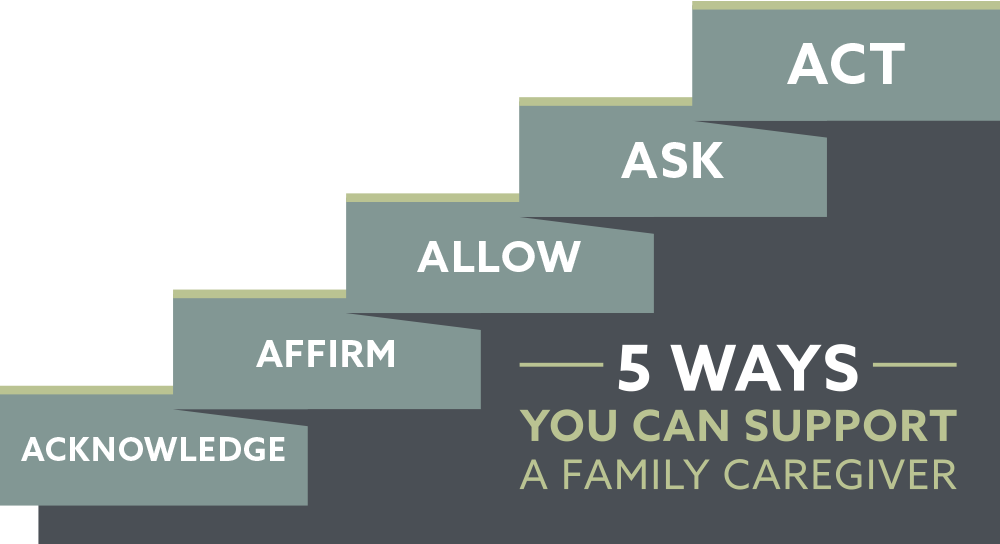
Published on:
It’s not uncommon for family caregivers to feel like they are invisible. In the family caregiver role, they continually serve their loved one. The needs of their loved one come first, always. Discussion with healthcare providers typically focuses on the needs of the patient, not the patient’s family caregiver. Months and years of supporting a loved one can lead some family caregivers to suppress or ignore their own physical and emotional care.
If you know a family caregiver and are aware of their situation, you may not know how to help. From the outside looking in, it may appear that there’s nothing you can do. Although you may not be able to “fix” the situation, you can certainly offer some meaningful assistance. Here are five ways you could support a family caregiver.
- Acknowledge. Family caregivers are rarely acknowledged. For this reason, when someone (especially a healthcare professional) acknowledges them, it is significant. Acknowledging the family caregiver reduces the sense of invisibility that can hover over those who selflessly serve in the role.
- Affirm. This is a step further than acknowledgment. Affirming the importance of the family caregiver validates efforts made on behalf of a loved one. Family caregivers usually serve out of love and duty, expecting nothing in return. However, affirmation of their invaluable service is usually appreciated.
- Allow. Due to the constant focus on a loved one’s condition, family caregivers can become bottled up emotionally or physically. Sometimes they simply need to be allowed to express their feelings or do something for themselves. If you, without judgment, allow a family caregiver to share how they feel or do something for themselves, it’s a great way to offer relief.
- Ask. Ask how you can help. Some family caregivers may consider your question to be a token gesture—and kindly say thank you, they’re doing just fine. If you ask again, without being overbearing, the family caregiver will understand that you’re genuinely interested in helping. Asking a family caregiver how you can offer support will start a dialogue about their needs.
- Act. If you’ve asked the family caregiver what you can do and they’ve given you the answer, then act by following through on that request. Make sure you’re performing the help the family caregiver requested, not the help you think they need (there’s a difference). By acting in accordance with their specific request for help, you’re showing respect for their situation, their decisions, and their family.
You probably noticed that each of the ways to support a family caregiver begins with the letter “A.” I hope the recurring use of “A” words will make these suggestions easier to remember.
The five ways to support a family caregiver can be viewed as a step ladder, with each step requiring a little more investment from you. Please know that whatever you do for support—whether acknowledging, affirming, allowing, asking, or acting—your concern will demonstrate empathy for both the family caregiver as well as their loved one.
You can download a free copy of the 5 Ways to Support a Family Caregiver here.
Posted in Caregiving, Eldercare, Family Caregiving






